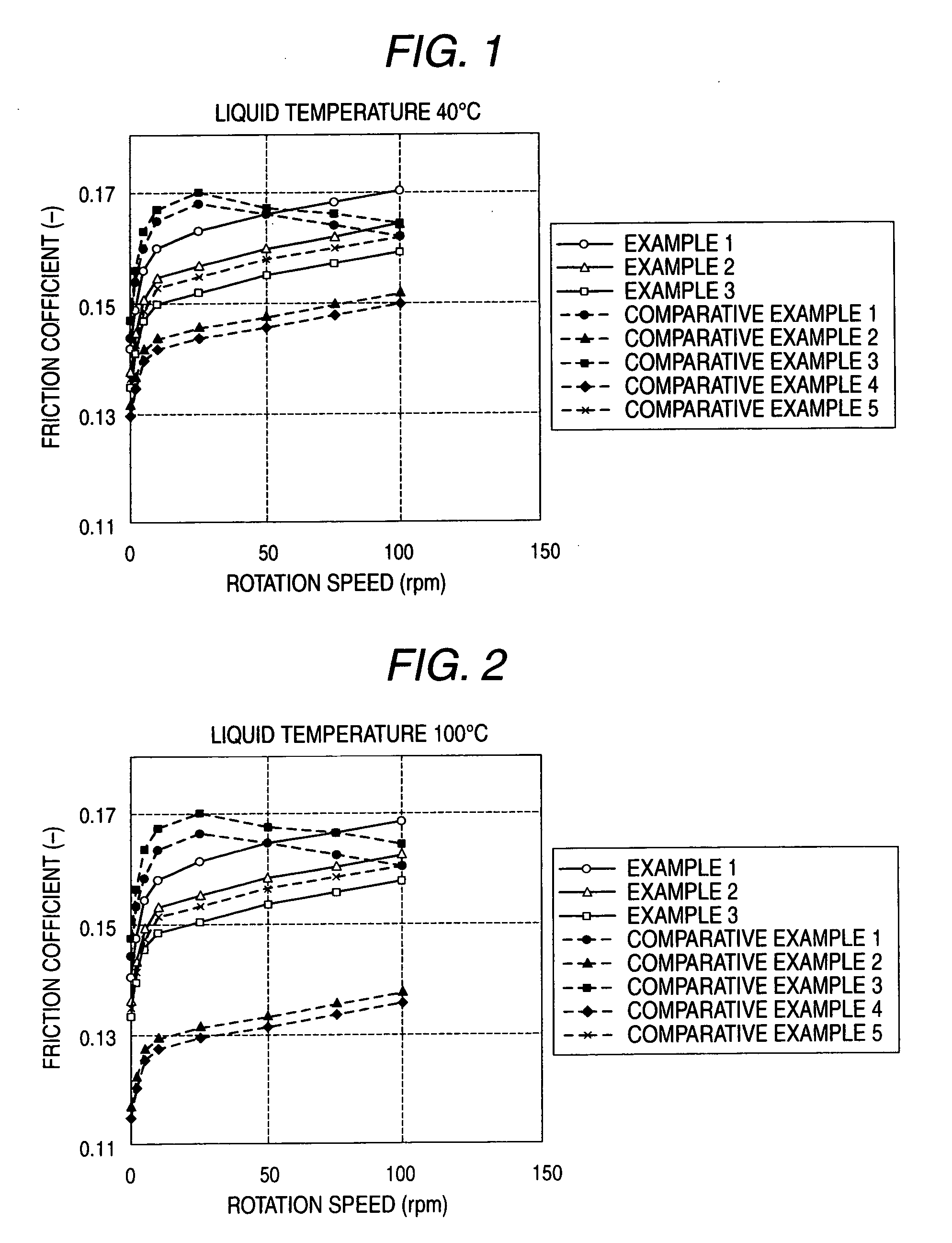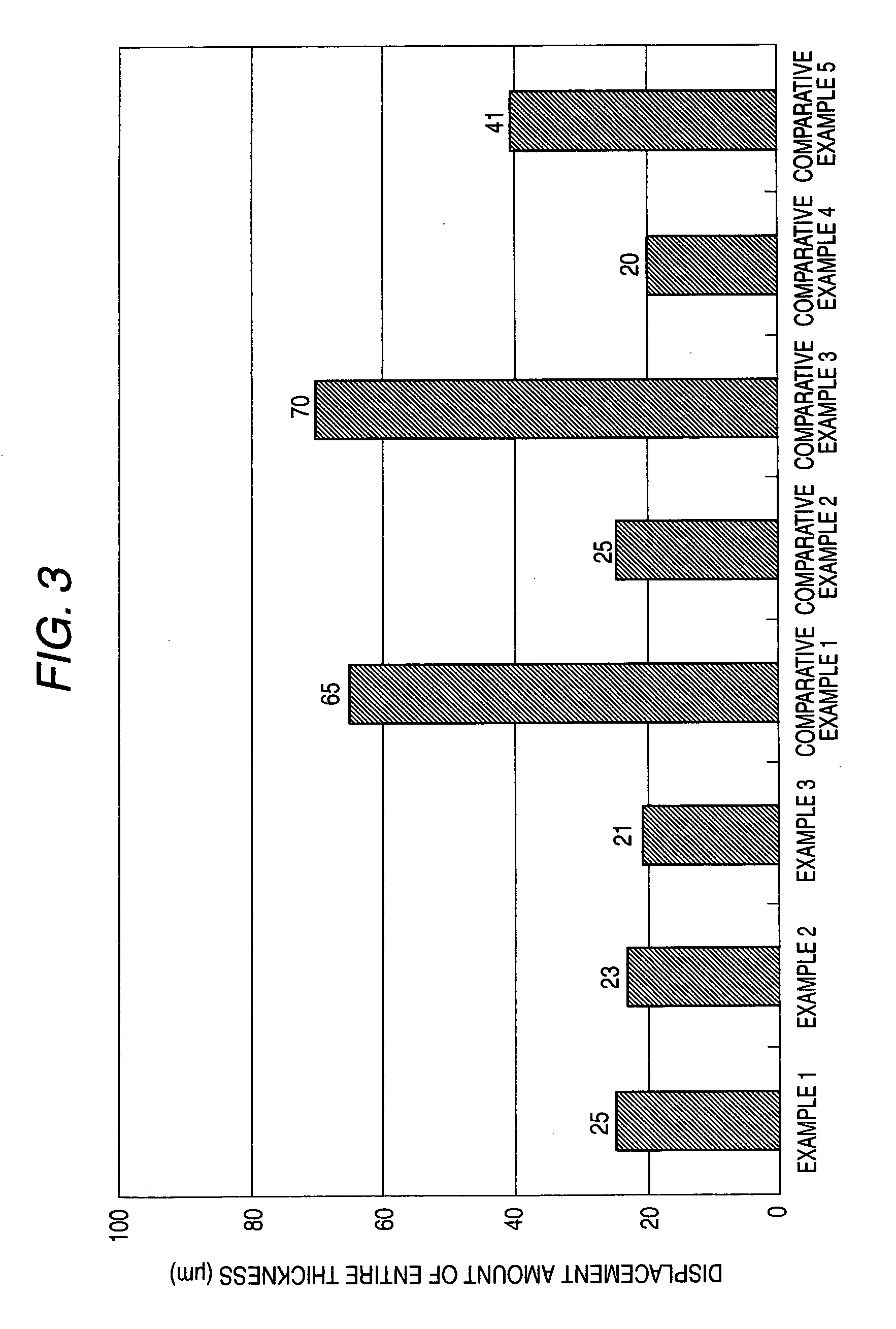Wet friction material
a technology of friction material and wet friction, which is applied in the direction of friction lining, weaving, transportation and packaging, etc., can solve the problems of increasing the difficulty of achieving high rotation and high output of automobile engines, reducing the friction coefficient gradually, and achieving excellent compression fatigue properties. , the effect of high friction coefficien
- Summary
- Abstract
- Description
- Claims
- Application Information
AI Technical Summary
Benefits of technology
Problems solved by technology
Method used
Image
Examples
example 1
[0064] The above-described liquid resin composition A was diluted by methanol and the resulting liquid was impregnated into the paper base material and then, the impregnated paper base material was dried and, subsequently, cured by heating it at a temperature of 150° C. for 30 minutes. In this way, a wet friction material having the paper base material of 100 parts and the binder of 40 parts was obtained. Then, the friction material was punched to obtain a ring having an outer diameter of 130 mm and an inner diameter of 100 mm, and the ring was held in a mold, which is heated to a temperature of 200° C., at pressure greater than 4.9 MPa for 30 seconds to integrate it with a ring-shaped core plate, to thereby obtain a friction plate having a diameter of 130 mm and a thickness of 2.3 mm.
example 2
[0065] A friction plate having a diameter of 130 mm and a thickness of 2.3 mm was obtained in a same manner as in Example 1 except that the above-described liquid resin composition B was used as the binder for the wet friction material.
example 3
[0066] A friction plate having a diameter of 130 mm and a thickness of 2.3 mm was obtained in a same manner as in Example 1 except that the above-described liquid resin composition C was used as the binder for the wet friction material.
PUM
| Property | Measurement | Unit |
|---|---|---|
| Fraction | aaaaa | aaaaa |
| Fraction | aaaaa | aaaaa |
| Fraction | aaaaa | aaaaa |
Abstract
Description
Claims
Application Information
 Login to View More
Login to View More - R&D
- Intellectual Property
- Life Sciences
- Materials
- Tech Scout
- Unparalleled Data Quality
- Higher Quality Content
- 60% Fewer Hallucinations
Browse by: Latest US Patents, China's latest patents, Technical Efficacy Thesaurus, Application Domain, Technology Topic, Popular Technical Reports.
© 2025 PatSnap. All rights reserved.Legal|Privacy policy|Modern Slavery Act Transparency Statement|Sitemap|About US| Contact US: help@patsnap.com


